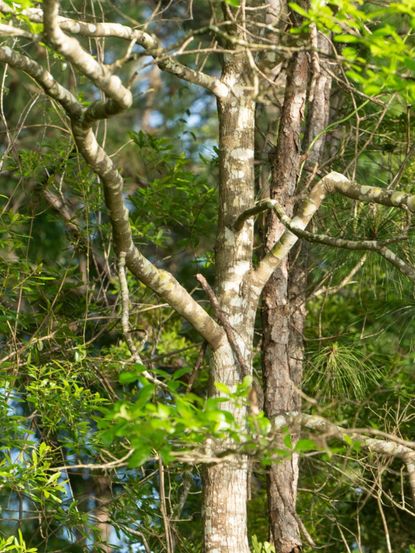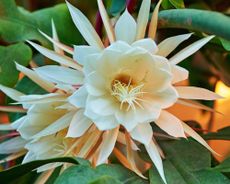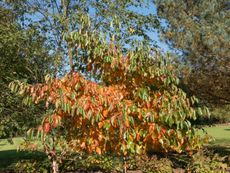Swamp Tupelo Info: Learn About Swamp Tupelo Trees In Landscapes


You are not likely to start growing swamp tupelo trees unless you live in an area with wet soil. What is swamp tupelo? It is a tall native tree that grows in wetlands and swamps. Read on for information about swamp tupelo tree and swamp tupelo care.
What is a Swamp Tupelo?
Unless you live on the country’s southeast coastal area, you may never see a swamp tupelo (Cornaceae Nyssa biflora), let alone hear of it. These are trees that thrive in wet bottomland soils. If you are considering growing swamp tupelo trees, you’ll need to take heed of the following swamp tupelo information: these trees grow in the wild in mucky areas, heavy clay soil, or wet sands – not your average landscape tree.
Swamp Tupelo Growing Conditions
They grow best where the soil is always wet from shallow moving water. Good sites include swamp banks, estuaries, and low coves that are saturated all year long. Even with excellent swamp tupelo care, you won’t be able to grow these trees in dry soil. In fact, you’ll find most swamp tupelo in the swamps and estuaries of the Coastal Plain. This includes parts of Maryland, Virginia, Florida, and Tennessee. Swamp tupelo information tells us that it is a tree that can soar to over 100 feet (30.5 m.) in height and swell out to 4 feet (1 m.) in diameter. The shape of the tree is unusual. Its crown is a narrow oval, and the tan colored bark has vertical furrows. The tree’s roots spread out on all sides of the tree, and they produce sprouts that can turn into new trees. If you like this unusual tree, you may want information on how to grow a swamp tupelo and that begins with finding an appropriate placement in your yard. A wet site is of utmost importance, but a sunny site is also essential. Swamp tupelos are said to be intolerant of shade. However, unless your property consists of swampy conditions and plenty of space, this isn’t likely something to add to the landscape. That said, this is a great tree for wildlife. According to swamp tupelo information, white-tailed deer love to eat the tree’s new growth and leaves, and many birds and mammals munch on its nutritious fruits. Other mammals that find nurture in swamp tupelo trees include bears, raccoons, and wild turkey. Birds also nest in the swamp tupelo. In addition, the flowers provide nectar for bees. So, if you are already fortunate to have one of these towering trees in the landscape, keep them around for the wildlife to enjoy.
Gardening tips, videos, info and more delivered right to your inbox!
Sign up for the Gardening Know How newsletter today and receive a free download of our most popular eBook "How to Grow Delicious Tomatoes."

Teo Spengler has been gardening for 30 years. She is a docent at the San Francisco Botanical Garden. Her passion is trees, 250 of which she has planted on her land in France.
-
 7 Best Dwarf Tomato Plants
7 Best Dwarf Tomato PlantsHave a tiny growing space? Look for dwarf tomato seeds so you don’t miss out on summer’s juicy bounty.
By Susan Albert
-
 5 Night-Blooming Houseplants – Grow An Indoor Moon Garden
5 Night-Blooming Houseplants – Grow An Indoor Moon GardenThere is something uniquely special about night-blooming houseplants. Set the scene for a magical evening indoors with these fragrant flowering beauties.
By Amy Grant
